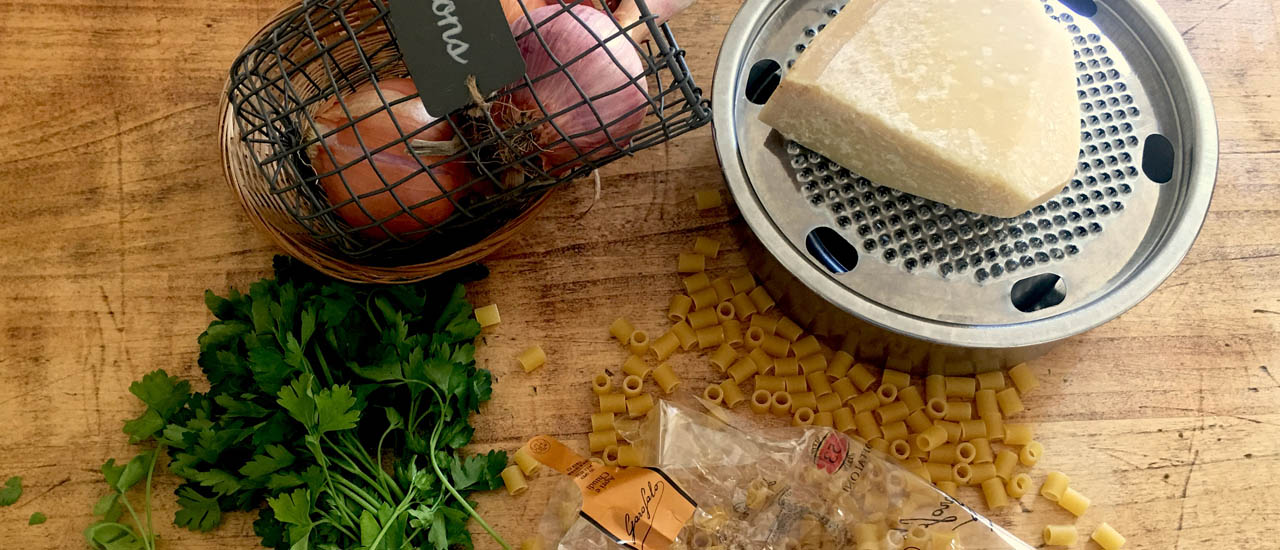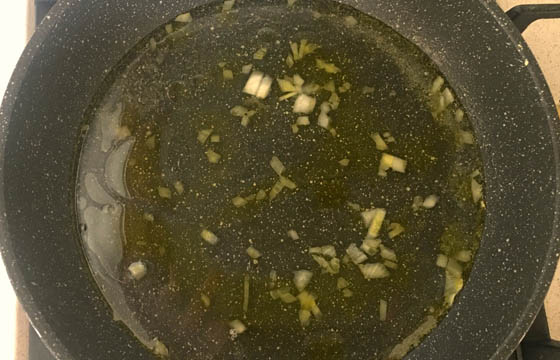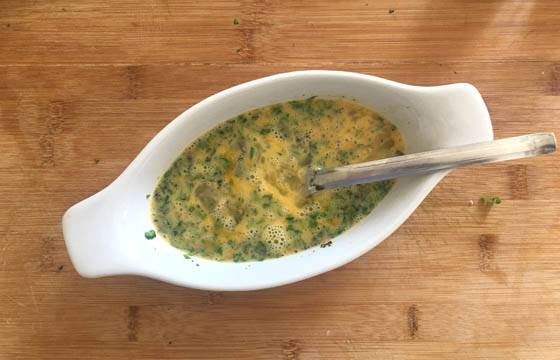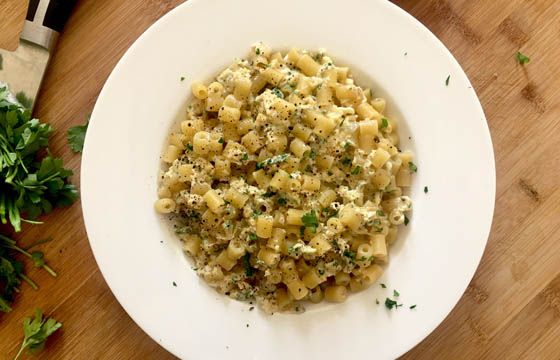Ingredients
 11.2 oz of ditali (or gramigna)
11.2 oz of ditali (or gramigna) 4 eggs
4 eggs 4.8 oz of grated parmesan
4.8 oz of grated parmesan 1 onion
1 onion parsley to taste
parsley to taste olive oil (or lard or butter) to taste
olive oil (or lard or butter) to taste salt and pepper to taste
salt and pepper to taste

There are many Neapolitan recipes that are made with cheap and easily found ingredients. One of these is “o tubettiell cas’ e ov”, or Cheese and Eggs Ditali. This dish is similar to the Roman Carbonara, but even simpler. History, with its fading memories, tells of a previous slightly different recipe from the one prepared by Neapolitans today. The main difference is the presence of lard. Many first courses using sugna (lard) have now seen this fat replaced with olive oil. We Neapolitans continue to use it, though, but mainly for dishes eaten at Easter, like the renowned casatiello or the pastiera. Despite much research, the origin of this recipe is still uncertain. However. considering the ingredients and how easy it is to prepare, it clearly is a highly nutritious dish, which may, at times, have been the only daily sustenance for some. Each family has its variations to the recipe too. In mine, for example, it is the first course of our Easter lunch, preceding the one with lamb sauce. My grandmother used to tell me, with dreamy eyes, how she used to go to the street market after all the housewives had gone home to cook lunch. This way, she could buy remainders without feeling too ashamed. There would be broken eggs lying in their packs, which she could buy for half their price from the boys in front of the shops. It was the 1960s. I’m telling you about my grandmother because this is how it was for most Neapolitan women at that time: primary means of support were scarce, but there was a strong will to live. Food, one way or another, was always on the table, and, most importantly, no matter the scarcity, where four people could eat, so could five or six people. For friends, all it took was one more broken egg.
 11.2 oz of ditali (or gramigna)
11.2 oz of ditali (or gramigna) 4 eggs
4 eggs 4.8 oz of grated parmesan
4.8 oz of grated parmesan 1 onion
1 onion parsley to taste
parsley to taste olive oil (or lard or butter) to taste
olive oil (or lard or butter) to taste salt and pepper to taste
salt and pepper to taste

Cut the onion finely, as this really adds to the taste. In a casserole, add a little oil and brown the onion - being careful it doesn’t get burned. Then, add enough water to cook the pasta, and let the onion dissolve.

Put the pasta directly in the casserole, making sure there is enough water. Let it cook for the designated time, stirring from time to time. In the meantime, beat the eggs with the grated parmesan, chopped parsley, a little pepper if you want, and salt.

When the pasta is ready and there is still some liquid at the bottom, put the eggs in the casserole, stir quickly, and turn off the heat.